An ECI Conference Series
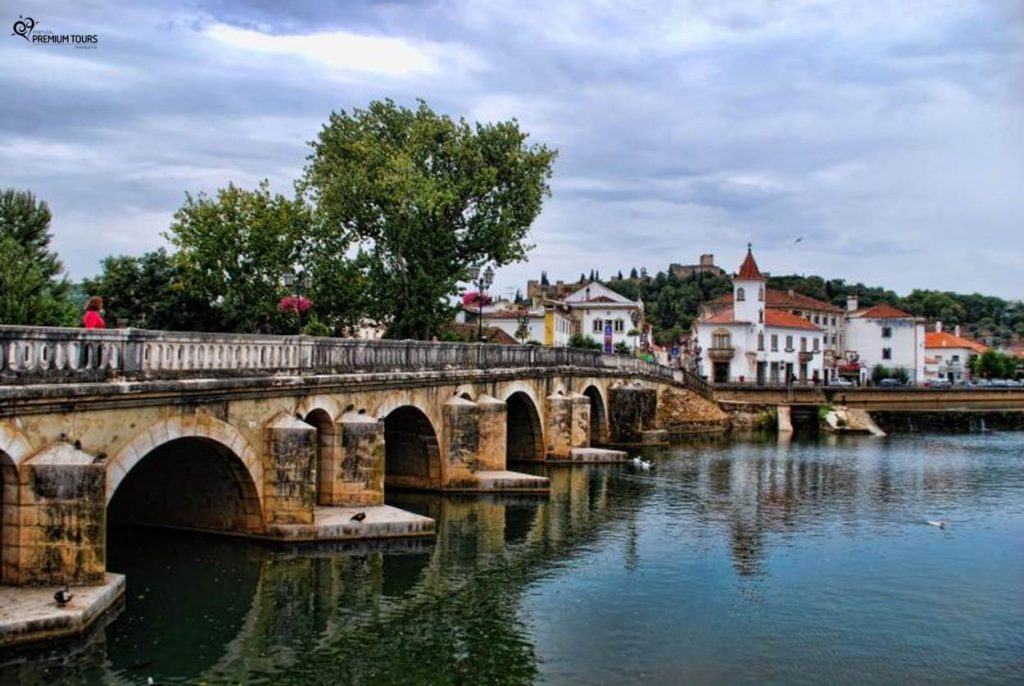
September 17-22, 2023
Tomar, Portugal
Outcome of the Conference:
“Biochar: A long lived form of Carbon Removal” position paper.
An invitation to endorse it.
Click HERE to download the letter and sign the form.
Your poster should be no larger than 1.5 meter high and 1.0 meter wide (Portrait Style)
Franco Berruti (Western University, Canada)
David Chiaramonti (Politecnico di Torino and RE-CORD, Italy)
Silvia Fiore (Politecnico di Torino, Italy)
Manuel Garcia-Perez (Washington State University, USA)
Ondrej Masek (University of Edinburgh, UK)
About This Conference
This proposed Conference is the third of the series, following the very successful Bio-Char I (Alba, Italy, 2017) and Bio-Char II (Cetraro, Italy, 2019).
When organic materials (woody or agricultural materials, organic residues, sewage sludge, digestate,…) are thermally decomposed in the absence of oxygen, one of the resulting products is bio-char, a solid compound rich in carbon and inorganic elements. Incorporated into the ground, bio-char is a porous soil enhancer that can lock up carbon, supply minerals, prevent nutrients leaching and water contamination and retain soil moisture. As a result, bio-char can be used as an efficient material to enhance soil properties while sequestering carbon. However, bio-char’s porous properties make it also suitable for a variety of value-added applications (adsorption of pollutants, filler for composites, catalysts, material for electronic applications, ….). Bio-char properties depend on the biomass feedstock used as well as the operating conditions used for its production. Moreover, they can be manipulated by pre- and post-processing. By understanding and controlling these factors it is possible to create value-added “designer bio-chars” for specific applications.
The interest in bio-char has been booming all over the world. A number of companies have jumped into production and the user community is looking for carbon-negative applications. As a result, it is imperative to review the existing knowledge as well as to stimulate research and development activities to bring clarity to this field, ranging from feedstock selection and properties, to production and upgrading processes, from identification of applications to economics, from characterization to products standardization and policies and carbon dioxide offset credits.
The conference aims to create a forum where the current knowledge as well as the future directions are openly reviewed and discussed.
Conference Organization
Conference Chairs
Franco Berruti (Western University, London, Ontario, Canada)
David Chiaramonti (Politecnico di Torino, Italy)
Silvia Fiore (Politecnico di Torino, Italy)
Manuel Garcia-Perez (Washington State University, USA)
Ondrej Masek (University of Edinburgh, Edinburgh, UK)
Scientific Committee
Franco Berruti, ICFAR, Western University (Canada)
David Chiaramonti, Politecnico di Torino and RE-CORD (Italy)
Silvia Fiore, Politecnico di Torino (Italy)
Manuel Garcia-Perez, Washington State University (USA)
Mauro Giorcelli, Politecnico di Torino (Italy)
Kelly Anne Hawboldt, Memorial University (Canada)
Naomi Klinghoffer, ICFAR, Western University (Canada)
Johannes Lehmann, Cornell University (USA)
Ondrej Masek, University of Edinburgh (UK)
Tom Miles, USBI and TR Miles Consulting (USA)
Ange Nzihou, IMT Mines Albi-CNRS (France)
Liang Wang, Sintef (Norway)
Main Themes and Proposed Sections
- History and log-term performance of bio-char: what can we learn from the past? Long-term monitored field studies
- Sustainable feedstocks for bio-char production: characterization, pre-processing and suitability/response to thermal processing
- Bio-char production processes: from torrefaction, slow and fast pyrolysis, gasification and hydrothermal processing
- Bio-char characterization: relationships among feedstock, production technology and characteristics
- Bio-char reactor technologies
- Co-products of biochar production: a biorefinery approach
- Bio-char physical and chemical post-processing (grinding, functionalization, activation
- Bio-char applications: soil amendments, adsorbents, catalysts, fillers for composites, electronic applications
- Bio-char handling, storage, markets and commercialization
- Bio-char use sequences: integration of value chains in agricultural models and forestry
- Bio-char policies, regulations, standardization, and carbon offsets credits
- Case studies: success stories, failures, and lessons learned
- Biochar and climate change
Format
As is typical of ECI conferences, there will be no parallel sessions in order to allow all participants to be exposed and contribute to all presentations. Apart from 4 plenary lectures of 30 minutes each, the regular contributions will consist of short oral presentations (10~12 minutes plus 2 minutes for change of speaker). Each presentation, however, will also be accompanies by a poster, to be presented normally during the social hour after dinner. The poster session will allow ample time for questions and answers and informal discussion between presenter and interested participants. Additional free-forum poster presentations will also be invited.
Networking time will be featured during each afternoon. This will allow participants to engage in informal discussions and to spend time together enjoying the many beautiful outdoors activities available in the region.
Submission of Abstracts
Original papers for presentations at the above listed sessions are invited. If you wish to be considered for an oral or poster presentation, please submit a one-page abstract. All abstracts will be reviewed by the session chairs.
Deadlines
Abstracts submission for oral presentation: OPEN
Abstract reviews: April and May 2023
Abstracts submission for poster presentations: OPEN
Final Program: June 1, 2023
Call for Free-Forum posters: Ongoing until August 31, 2023
Please prepared your abstract according to this template: docx or doc.
All abstracts should be submitted electronically and submissions must follow the template provided at This Link.
Abstracts of all presentations will be made available to conference participants prior to the start of the conference.
Graduate students and young investigators are particularly encouraged to present posters. An evening poster session will be an integral part of the conference. If an abstract has multiple authors, each of whom wishes an invitation to attend the conference, each author must submit a separate application.
Conference Fees and Registration
Conference Fees
All conference fees are inclusive. They include registration, accommodations (nights of Sunday (September 17), Monday (September 18), Tuesday (September 19), Wednesday (September 20) and Thursday (September 21)), all meals, excursion, taxes, and gratuities from the reception and dinner on Sunday through breakfast on Friday. Incidental fees (telephone calls, faxes, spa, laundry, minibar etc.) are billed to your personal account by the hotel.
ALL PARTICIPANTS (INCLUDING MEMBERS OF THE ORGANIZING COMMITTEE AND INVITED SPEAKERS) ARE REQUIRED TO REGISTER.
The conference fees are:
| Register | Register Aug 10, 2023 | |
| Participant (single occupancy or sharing room with a guest; guest fee additional) | US $2,010 | US $2,210 |
| Participant (sharing a room with another participant) | US $1,810 | US $2,010 |
| Bona fide Graduate Student (sharing a room with another student) (Those in this category must upload proof of current status during registration – copy of current Student ID or a letter from your University confirming your student status) | US $1,395 | US $1,595 |
| Bona fide Graduate Student (single occupancy or sharing room with a guest; guest fee additional) (Those in this category must upload proof of current status during registration – copy of current Student ID or a letter from your University confirming your student status) | US $1,595 | US $1,795 |
| **Fees for Guest/accompanying person sharing bedroom with a participant. (Includes all conference included meals and excursion) | US $695 | US $695 |
| **Fees for Guest/accompanying person sharing bedroom with single occupancy participant. (Bed & Breakfast ONLY – no meals, no excursion, no social hours or coffee breaks) | US $100 | US $100 |
If you plan to bring children to the conference, please contact Kathy Chan for pricing.
Conference Registration
You will need a login name and password to register for ECI conferences through our online system. If you have been a recent participant at an ECI conference or have submitted an online application or request for information about an ECI Conference, you may already have an account with us. If you know your login information, please use it.
If you are not sure whether you already have a login and password, please click on automated password retrieval and enter your e-mail address before creating a new account. If we don’t have a valid email address on file for you, a pop up window will appear stating that no records were found. Click “OK” and then follow the instructions to create a new account.
If you have any questions or experience any difficulties, please email Kathy Chan.
Special Notes and Payment Instructions
We suggest that you register as soon as possible to be certain that you will have a hotel room at the conference rate.
All participants are encouraged to register before August 10, 2023. There is a discounted price for registering before this date. Hotel space cannot be guaranteed for registrations received after this date. Your registration is not officially confirmed until we receive payment of the amount due. ECI reserves the right to cancel your room registration if payment is not received or your vaccination proof is invalid. Your invoice/receipt will automatically be e-mailed upon of receipt of your registration. Should you need a signed receipt, please contact Kathy Chan.
Because of contractual guarantees made with the hotel for room and meal functions, no shows, late arrivals, missed meals and early departures cannot receive fee adjustments. If you have a disability and may require accommodation in order to participate fully in this conference, please indicate this when you register. An ECI representative will contact you to discuss your specific needs. If you have special dietary requirements (e.g., vegetarian or a food allergy), please make a note on your registration. The chef needs to know this information in advance if we are to accommodate you. ECI will attempt to accommodate special requests such as Kosher or Halal meals, but such meals may not be available at all conference sites. The participant must pay any additional costs for special meal requests that ECI pays a surcharge for.
Payment must be made by credit card (Visa, MasterCard, and Amex), check or money order drawn on a U.S. bank in U.S. dollars, payable to ENGINEERING CONFERENCES INTERNATIONAL. Checks or money orders in any other currencies are NOT ACCEPTABLE. Payment must be made on the web site except for those who are sending payment by wire transfer or have a purchase order from their company/institution.
WIRE TRANSFER PAYMENT: If you are planning to make payment by wire transfer, please contact Kathy Chan for the bank information. You must add $30 to cover ECI bank charges. Please reference your full name and the conference title. Please email a scanned copy to Kathy Chan. This is very important – otherwise it is extremely difficult to trace your payment and you may not receive a receipt prior to the conference.
Cancellation Policy: Cancellation must be received by ECI in writing at least 28 days prior to the start of the conference in order for a full refund (less a processing fee) to be considered. The ECI auditors require that refunds for all conference cancellations be processed after the conference so that the necessary back-up information (e.g., hotel list of those in-house) can be attached to the refund request and ECI can verify that the hotel has not charged a cancellation fee.
Cancellation fees:
- Cancellations received more than 28 days prior to the conference start date are subject to a processing fee of 4% of the total fee, plus any direct expenses incurred by ECI.
- Cancellations received 15 – 28 days prior to the conference start date are subject to a $250 cancellation fee plus any direct expenses incurred by ECI.
- Cancellations received 8 – 14 days prior to the conference start date are subject to a $500 cancellation fee plus any direct expenses incurred by ECI.
- No refunds will be issued for cancellations received less than 7 days prior to the conference start date.
- No refunds will be issued due to inclement weather or travel disruptions/cancellations.
Registrations may be transferred without incurring any penalty or cancellation fee.
Denied or delayed visa
If a participant is forced to cancel due to a denied or delayed entry visa, ECI will issue a full refund if ECI has been notified of a potential visa issue at least four weeks prior to the conference start date.
Change of payment method
If an attendee who has already paid the conference fee with a credit card requests that the fee be refunded to that card so that it can be paid in a different manner (e.g., charged to an alternate credit card, or paid via check or bank transfer), a processing fee of 4% of the total fee amount will apply.
Disclaimer
It may be necessary for reasons beyond the control of ECI to alter the content and timing of the program or the identity of the speakers. In the unfortunate circumstance that an event is cancelled, ECI is not liable for any costs incurred by participants in connection with their attendance.
Smoking is prohibited at ECI conferences and conference functions.
Should you have specific questions regarding your registration, please contact Kathy Chan. The Engineering Conferences International conferences calendar and other information can be found on the ECI web site: www.engconfintl.org
Pre and Post Conference Reservation Form
If you are arriving early or staying after the conference and wish to extend your stay in the conference hotel, please download and complete the Pre/Post Conference Reservation form posted below and send it directly to the conference hotel. ECI does not guarantee or pay for rooms reserved before or after the conference – you must reserve extra nights directly with the hotel and you are responsible for paying the hotel directly for any extra nights.
Venue Information
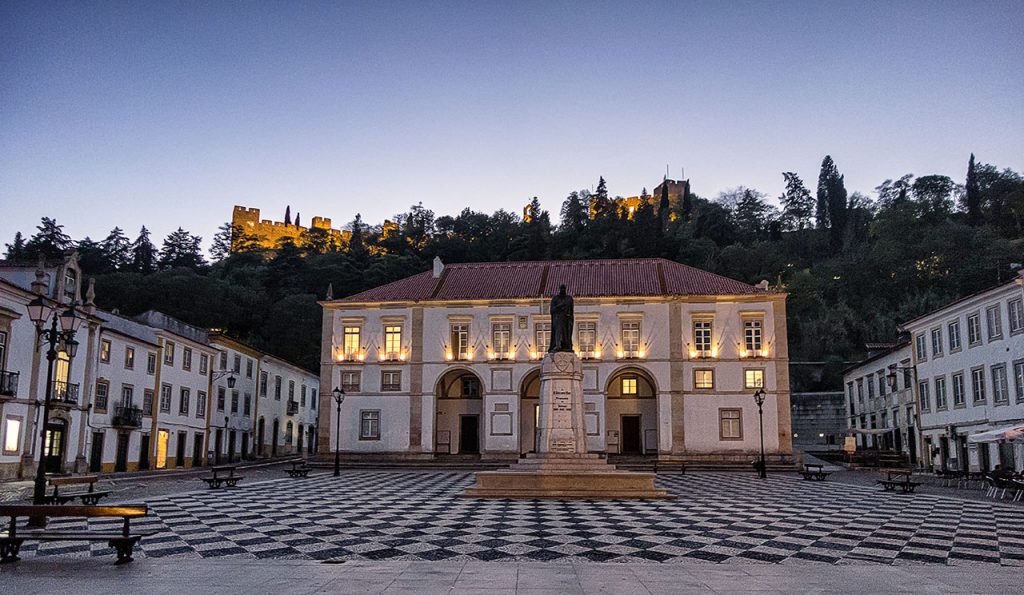
Situated in the geographic center of Portugal, Tomar (about 135 km northeast of Lisbon) was founded by the notorious Knights Templar in 1160. The Templars were part monks, part warriors and plotted crusades from Tomar for centuries. They established the beginnings of the Convento de Cristo, Tomar’s most famous landmark, on a hill overlooking town. The Convento combines architectural styles from the 12th through 17th centuries. An ornate octagonal canopy protects the high altar of the Templo dos Templares, modeled after the Holy Sepulchre in Jerusalem, and the grounds of the convent contain eight cloisters embracing a variety of styles.
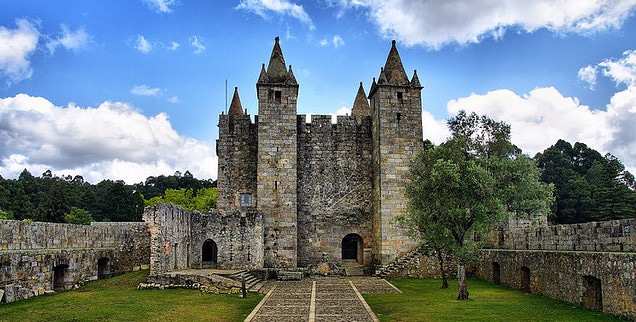
The Templars earned a reputation as ferocious fighters, and won the admiration and trust of both rich and poor. They served as protectors and transporters of Christian kings, power brokers and pilgrims and grew famous as bankers. The Templars acquired great wealth, but made many enemies in the process. Pope Clement V accepted accusations of heresy, blasphemy and sacrilege leveled against the Templars by Philip the Fair, king of France, and many Templars were imprisoned or executed. King Dinis of Portugal allowed them to regroup their forces under the new aegis of the Order of Christ. Prince Henry the Navigator became Administrator after the Templars became the Order of Christ and he used much their wealth to finance his explorations.

Tomar is divided by the River Nabão, the banks of which are dotted with weirs and wheels once used to water vegetable gardens and orchards. The irrigation techniques illustrate the Muslim tradition of hydraulic engineering. Most sights, accommodations and shops lie on the west bank of the river and the lush Parque Mouchão straddles the two banks. The ancient yet functional Ponte Velha (Old Bridge) connects the two. Tomar’s main shopping thoroughfare is rua Serpa Pinto, known locally as Corre Doura. Outlets for folklore, pottery, copperware and wrought iron highlight it. Tascas and bars are scattered throughout the city, with some offering live music.
Hotel dos Templários
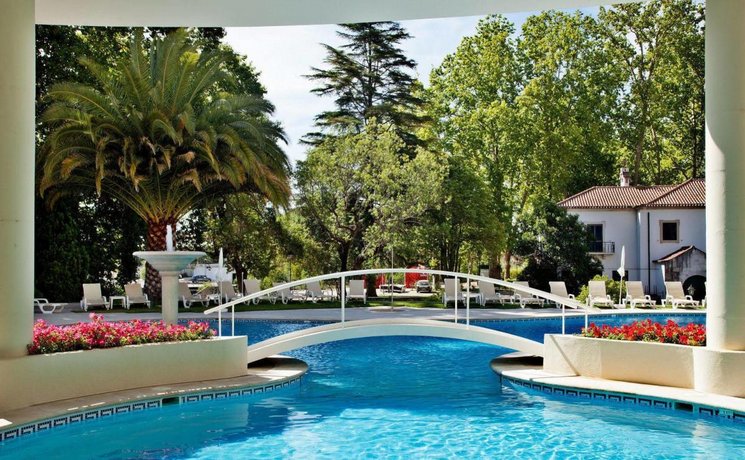
Situated near the heart of Tomar’s Old Town, the Hotel dos Templários is the largest hotel in the district. Many rooms offer views of the Convent of Christ and the public areas, including lounges and terrace-view dining rooms, are spacious. The hotel offers room service, laundry, a barbershop, a beauty parlor, a billiards room and baby-sitting. There are wide sun terraces, indoor and outdoor pools, a tennis court and a greenhouse. The hotel also has large gardens. Rooms have air conditioning, private bathrooms, televisions and minibars. Free parking is available.
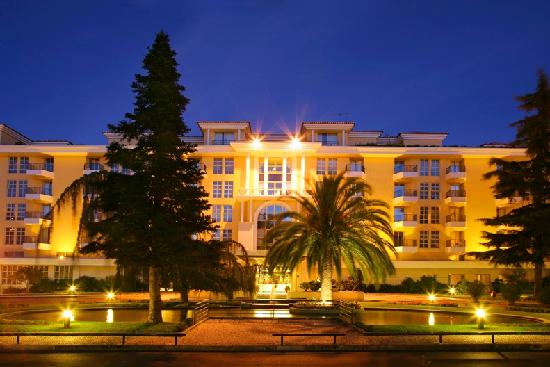
For more information on the area, please visit these web sites:
http://www.golisbon.com/portugal/cities/tomar.html
http://www.sacred-destinations.com/portugal/tomar.htm
www.ezportugal.com/tomar-portugal
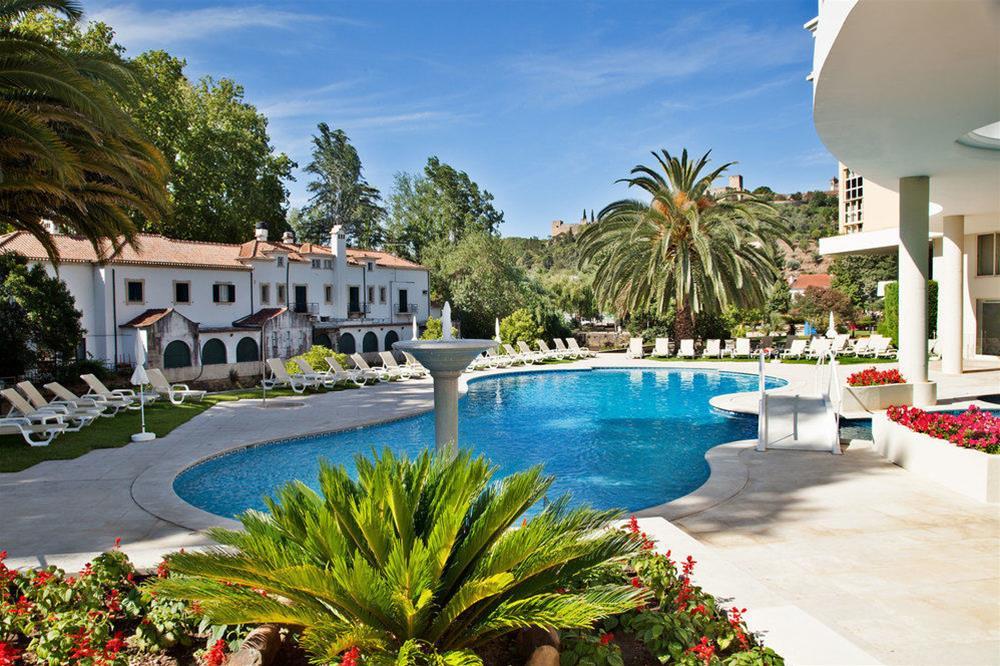
Transportation From Lisbon Airport
Transportation to Tomar: On the weekend, trains depart about every two hours from Lisbon to Tomar at the Oriente train station (Lisboa Oriente). On weekdays, trains run about once an hour. The train station is about 3 km from the airport.
To get to Gare do Oriente from the Lisbon International Airport you can go by Metro or Taxi:
- Metro – Metro trains run every few minutes from 6 am to 1 am. A one-way ticket is approximately 2-3 EUR.
Website: http://metro.transporteslisboa.pt/eng/
- Taxi – Taxicabs depart from the front of the airport and the trip takes about 10 minutes. You can purchase a “Taxi Voucher” ticket for the Oriente train station (approximately 25 EUR) inside the airport at the Tourism Information Centre. This option sets an exact price for the trip, but if there is no traffic, then use a regular taxi that would cost between 15-20 EUR. Note: There are usually taxis available at the Departure area of the airport and sometimes the price is cheaper than at the Arrivals area.
- Note that if you have a long wait at the Oriente train station (itself a work of art) for the next train to Tomar, there is a large shopping mall (Vasco da Gamma Mall) just across the street from the train station.
- If you have any questions about these means of travel, you can ask at the “Tourism Information” center at the airport.
- The train trip from Lisbon to Tomar takes approximately 2 hours. Upon arrival at the Tomar train station, taxis are available for the one- or two-kilometer trip to the Hotel Dos Templarios. (For train schedules and tickets visit https://www.cp.pt/StaticFiles/horarios/regional/comboios-regionais-lisboa-tomar.pdf, The cost of a one-way ticket to Tomar is approximately 10 -14 EUR.
- If you are traveling with a companion, it might be useful to check the current price for either an Uber or a taxi directly from the airport to the hotel. Earlier this year several conference participants reported paying approximately 110-115 EUR for the journey.
If you plan to drive to Tomar, there is free parking at the hotel. Once in Tomar, follow the hotel signs. (Our hotel is the major one in the town.) If you are from the US and have not yet rented a car, try www.autoeurope.com which will allow you to comparison shop. The rental car companies will provide maps and driving instructions. Allow between 1-1/2 – 2 hours for the trip, depending on traffic.
General Information About ECI
Engineering Conferences International (ECI) is a not-for-profit, global engineering conferences program, originally established in 1962 that provides opportunities for the exploration of problems and issues of concern to engineers and scientists from many disciplines.
The format of the conference provides morning and late afternoon or evening sessions in which major presentations are made. Poster sessions will be scheduled for evening discussion as well. Available time is included during the afternoons for ad hoc meetings, informal discussions, and/or recreation. This format is designed to enhance rapport among participants and promote dialogue on the development of the meeting. We believe the conferences have been instrumental in generating ideas and disseminating information to a greater extent than is possible through more conventional forums.
All participants are expected both to attend the entire conference and to contribute actively to the discussions. The recording/photographing of lectures and presentations is forbidden. As ECI conferences take place in an informal atmosphere, casual clothing is the usual attire.
Smoking is prohibited at ECI conferences and conference functions.

